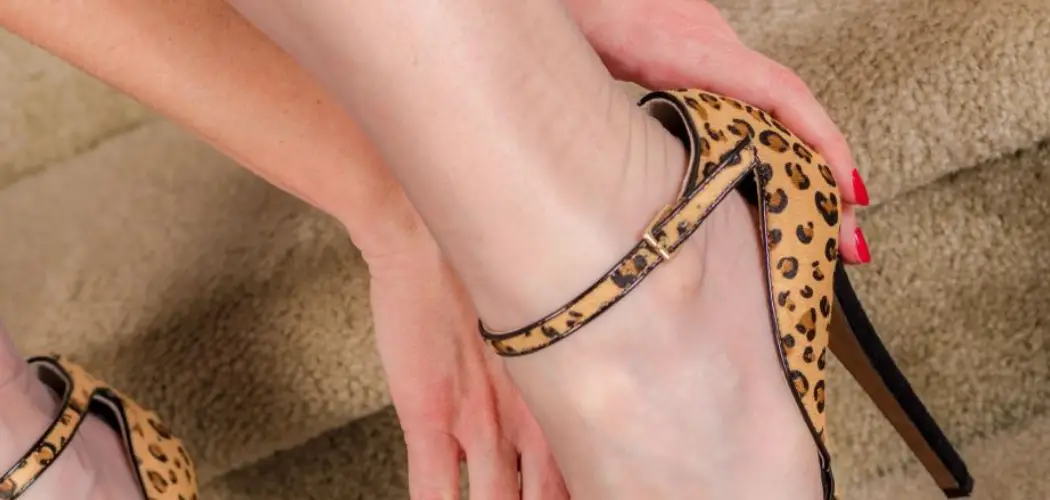Are you tired of suffering from painful blisters every time you wear heels? Look no further! In this guide, we will discuss some tips and tricks on how to not get blisters from heels.
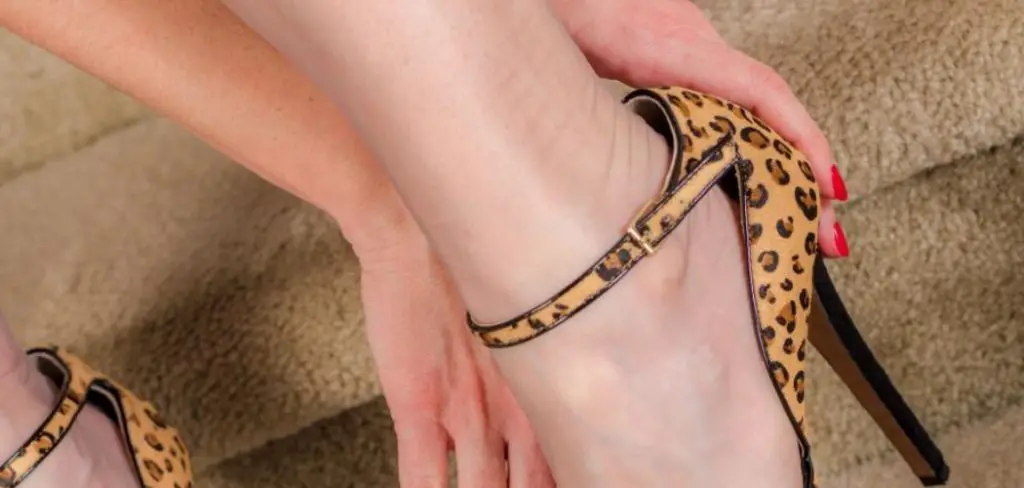
Wearing high heels can elevate an outfit from good to glamorous, but the beauty often comes with a price—painful blisters that can torment every step. Whether you’re attending a gala, striding into a boardroom, or simply out on the town, the discomfort of blisters can significantly dampen your confidence and enjoyment. However, it’s possible to strut in those stunning stilettos without falling victim to blisters.
This guide will offer tried-and-true methods to keep your feet unscathed. It will combine preventive measures and savvy fashion hacks to ensure that your style doesn’t have to be a source of pain.
What are the Benefits of Wearing Heels?
Before diving into the tips, let’s first understand why heels are popular footwear choices and their benefits. Here are a few reasons why people love wearing heels:
- Creates an Illusion of Longer Legs: By elevating your feet, heels make your legs appear longer and leaner.
- Improves Posture: The height difference between the heel and the toes forces you to stand up straight, leading to better posture.
- Boosts Confidence: Wearing heels can make you feel more powerful and confident, positively impacting your mood and demeanor.
- Adds a Touch of Sophistication: Heels are often associated with elegance and grace, making them a popular choice for formal events.
While wearing heels has many benefits, blisters can quickly ruin the experience. That’s why it’s essential to take preventive measures to avoid them.
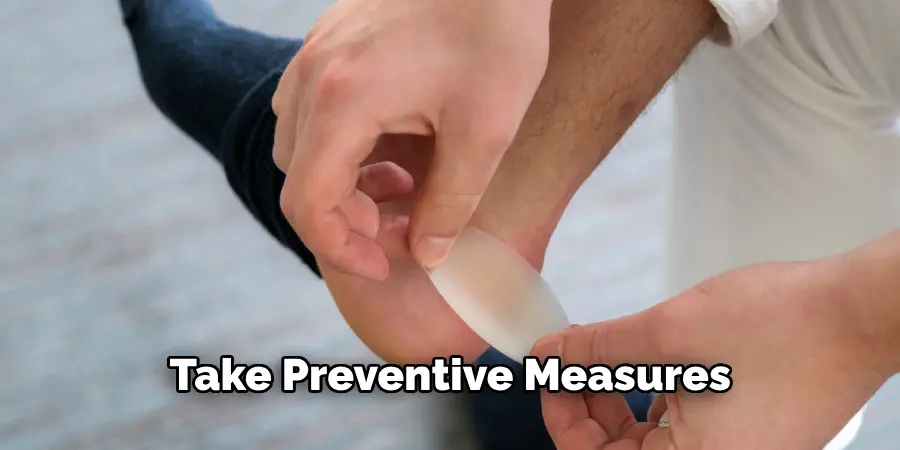
What Will You Need?
To successfully prevent blisters, you will need the following items:
- High heels
- Band-Aids or moleskin pads
- Gel inserts or insoles
- Foot powder or antiperspirant spray
Now that you have everything you need, let’s get started!
10 Easy Steps on How to Not Get Blisters From Heels
Step 1. Choose the Right Fit:
Ensure your heels fit properly; they shouldn’t be too tight or too loose. Shoes that are too tight can cause friction, while those that are too loose can lead to your foot sliding and rubbing against the shoe. Try on heels in the late afternoon or evening when your feet are naturally a bit swollen to find the best fit.
Step 2. Break in Your Heels:
Before wearing your heels for a long event or day out, breaking them in is crucial. Wearing new heels around the house for short periods can help soften the material and shape the shoe to your foot’s natural contours. To expedite the process, consider wearing thick socks with your heels during these break-in sessions. The socks will stretch the material slightly, making the shoes more comfortable and reducing the risk of blisters.
Start with 15 to 20 minutes daily and gradually increase the time as the shoes become more comfortable. This technique makes your heels more bearable for longer periods and significantly decreases the chances of developing blisters caused by stiff shoe materials rubbing against your skin.
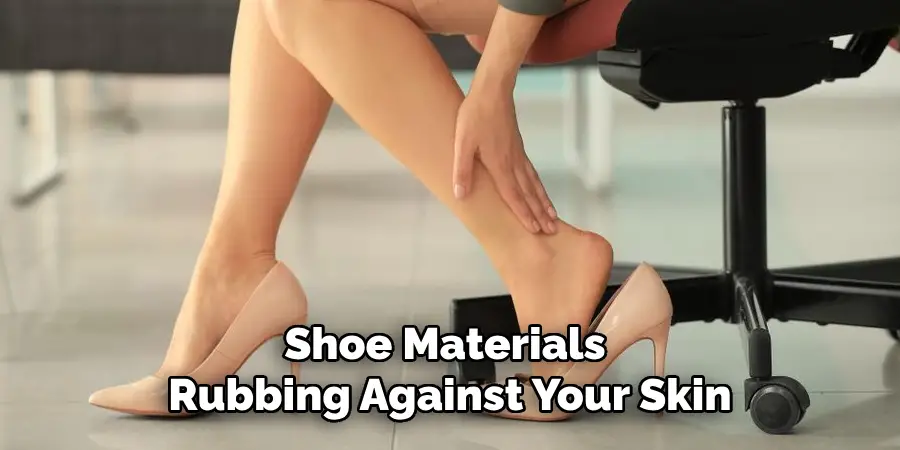
Step 3. Use Antiperspirant:
Just like your underarms, your feet can benefit from an antiperspirant. Before slipping into your heels, apply a clear, unscented antiperspirant to the areas of your feet that are most prone to blisters. This includes the back of your heel, sides of your toes, and anywhere else friction might occur.
The antiperspirant will reduce moisture and lessen friction, making it less likely for blisters to form. Allow the antiperspirant to dry completely before wearing your shoes to maximize its effectiveness. This simple preventative step can make a significant difference in keeping your feet dry and blister-free throughout the day.
Step 4. Invest in High-Quality Insoles or Gel Inserts:
Adding high-quality insoles or gel inserts to your heels can greatly reduce the pressure on the balls of your feet, which is a common area for blisters when wearing high heels. These inserts provide extra cushioning and support, distributing your weight more evenly across your foot rather than concentrating it on your toes and the ball of your foot. Look for insoles designed specifically for high heels or those that can be trimmed to fit.
Gel inserts, in particular, are effective because they mold to the shape of your foot, offering targeted relief and preventing the forward slide that causes toe pinching and friction. Placing them strategically in your heels can significantly enhance comfort and stave off blisters.
Step 5. Tape Your Toes:
A surprisingly effective method to prevent blisters is to tape your toes together. Using skin-friendly tape, the most common approach is to tape your third and fourth toes (counting from the big toe). This technique reduces the strain on the nerve that sits between these toes, which is often aggravated by wearing high heels.
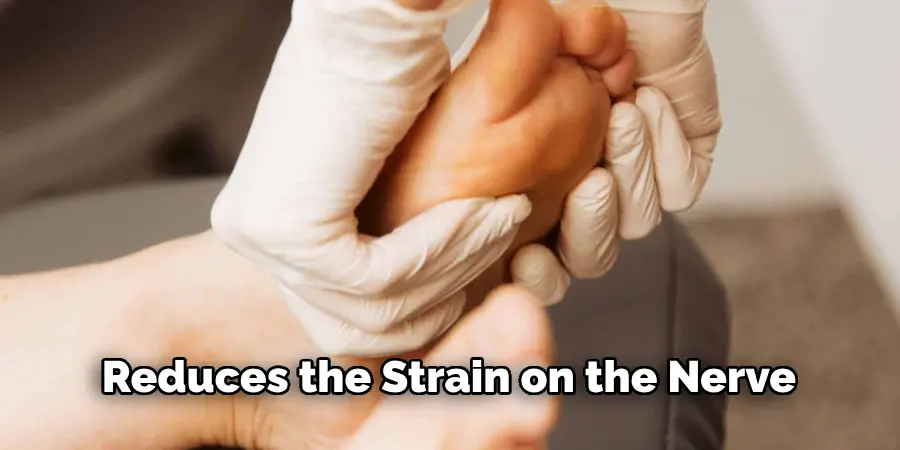
You can minimize discomfort and the formation of blisters by alleviating this pressure. Ensure the tape is secure but not too tight, as cutting off circulation would cause new issues. This trick is convenient for days when you know you’ll be on your feet for extended periods.
Step 6. Choose Shoes with Soft Inner Lining:
When shopping for heels, opt for shoes with a soft inner lining. Materials like leather and suede are more forgiving than synthetics and will mold to the shape of your feet, reducing the likelihood of friction and blisters. A softer interior means there’s less chance of harsh rubbing against your skin, which is often the culprit behind blister formation.
Pay attention to the seams and edges; they should be smooth and well-constructed, as these areas commonly cause irritation. Investing in shoes with quality construction and materials enhances comfort and can extend the lifespan of your heels, making them a wardrobe staple for years to come.
Step 7. Apply Moleskin or Band-Aids Beforehand:
Before stepping out the door, consider applying moleskin or Band-Aids to known trouble spots on your feet. If you know specific areas that tend to develop blisters when wearing heels, pre-emptively covering these spots can act as a barrier between your skin and the shoe.
Cut the moleskin or Band-Aids to the necessary size and shape, ensuring they fully cover the vulnerable area without folding or wrinkling, which could cause additional irritation. This preventative measure is handy for long events where changing footwear isn’t an option, helping you stay comfortable and enjoy your time without the distraction of painful blisters.
Step 8. Keep Your Feet Dry:
Maintaining dry feet is crucial to prevent blisters, as moisture increases friction between your skin and the shoe. Throughout the day, if possible, take off your heels to air out your feet and keep them dry. Using footpowder or carrying extra antiperspirant for touch-ups can also help manage moisture.
Consider bringing along an extra pair of socks or tights to change into for longer events, ensuring your feet stay dry and comfortable. This step is especially important for those prone to sweating, as even a small amount of moisture can significantly increase the risk of blister formation.
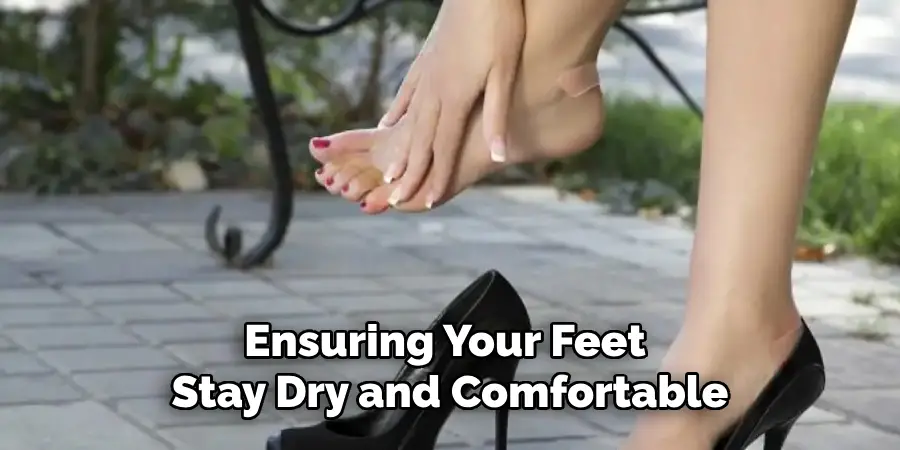
Step 9. Choose the Right Size and Style:
Ensuring that your heels fit correctly is fundamental to preventing blisters. Too tight-heels can cause unnecessary friction and pressure, leading to blisters, while too loose may cause your foot to slide and rub against the interior. Selecting a style that fits well with your foot shape is also crucial.
For instance, if you have wide feet, look for styles with a wider toe box to minimize squeezing and pressure on the toes. Ankle straps can help secure the foot and prevent sliding. Remember, when trying on heels, do it at the end of the day when your feet are naturally more swollen to ensure a true fit. This proactive approach to shoe selection can greatly decrease your chances of developing blisters from ill-fitting heels.
Step 10. Break in Your Heels Gradually:
Before wearing your new heels for a long event or a day out, gradually break them in at home is wise. Start by wearing your heels for short periods while doing household activities. This allows the material of the shoes to soften and mold to the shape of your feet, reducing the initial stiffness that often causes blisters and discomfort.
For areas that feel particularly tight, consider using a shoe stretcher or the thick sock method—wearing thick socks with your heels and gently warming the tight areas with a hairdryer. Remember, the goal is to gently expand the material, so proceed cautiously to avoid damaging the shoes. This step is crucial for acclimatizing your feet to the heels, ensuring both comfort and style with minimal risk of blistering.
Following these ten steps can significantly reduce the chances of developing blisters when wearing high heels.
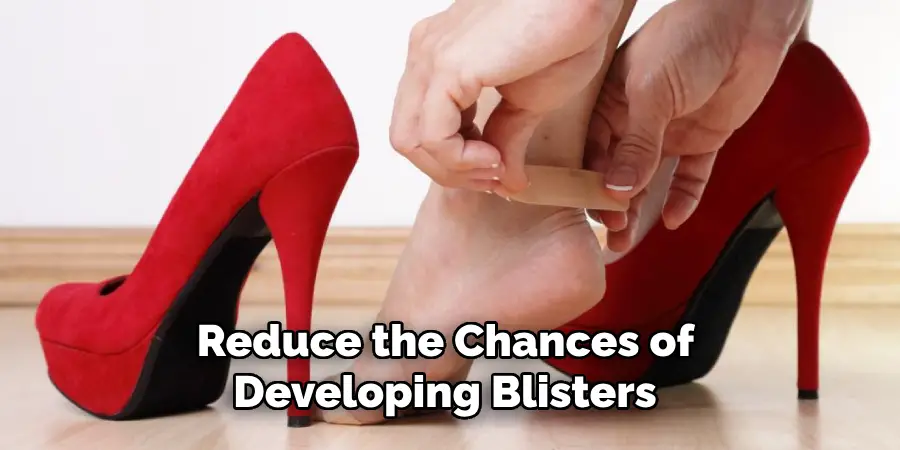
5 Additional Tips and Tricks
- Use Anti-Blister Balms: Before slipping into your heels, apply an anti-blister balm on areas prone to blisters. The balm reduces friction between your skin and the shoe, acting as a protective layer.
- Opt for Heel Inserts: Heel inserts can offer extra padding and ensure your shoes fit snugly, preventing the constant rubbing that leads to blisters. Various inserts are available, including those specifically designed for the ball of the foot, arch, and heel.
- Choose Leather Heels: Leather is a breathable material that tends to mold to the shape of your foot over time. Opting for heels made of leather can significantly reduce the chances of blistering compared to synthetic materials.
- Break in New Heels Gradually: Before wearing new heels for a long event, break them in gradually at home. Wear them for short periods and consider using a shoe stretcher for tight areas. This approach allows the shoes to mold to your feet’s shape, reducing the risk of blisters.
- Use Moleskin or Band-Aids: If you feel a blister forming, protect the area with moleskin or Band-Aids. These can act as a cushion and prevent further rubbing and irritation. Make sure to replace them regularly throughout the day if needed.
While these additional tips may not guarantee that you will never get blisters from your high heels, they can significantly reduce
5 Things You Should Avoid
- Avoid Wearing New Heels for Extended Periods Initially: Jumping straight into a full day or a long event with brand-new heels is a surefire way to develop blisters. The shoes have not had the chance to mold to your feet, and your feet are not accustomed to the heels.
- Do Not Ignore the Importance of Size and Fit: Wearing heels that are too small, too big, or simply the wrong shape for your feet can cause blisters by creating points of friction and pressure. Always ensure your heels fit well and support your foot shape.
- Avoid Skipping the Break-In Period: Failing to gradually break in your heels at home before wearing them out can result in stiff shoes that are more likely to cause discomfort and blisters. Take the time to soften and stretch the material gently.
- Do Not Wear Heels Without Proper Foot Preparation: Going barefoot in heels or skipping protective measures like anti-blister balms, moleskin, or appropriate hosiery can increase friction and the risk of blisters. Proper foot preparation is key to a blister-free experience.
- Avoid Forgetting to Rotate Your Shoes: Wearing the same pair of heels day in and day out does not give your feet or your heels a rest. Different shoes distribute pressure and friction differently, so rotating your footwear can help prevent blister formation.
By avoiding these common mistakes, you can significantly decrease your chances of developing blisters while wearing high heels.
How to Toughen Feet to Prevent Blisters?
Toughening your feet can be an effective way to prevent blisters from forming while wearing high heels. Here are some tips to help toughen your feet:
- Gradually Increase Heel Height: If you are not used to wearing high heels, start by wearing lower heels and gradually increase the heel height over time. This will allow your feet to adapt and become more accustomed to the pressure and friction of wearing heels.
- Wear Heels for Short Periods: Similar to gradually increasing heel height, start by wearing your heels for short periods and slowly increase the duration as your feet toughen up.
- Perform Foot Strengthening Exercises: Strengthening exercises such as calf raises and toe curls can help build up the muscles in your feet and make them more resilient to wearing high heels.
- Walk Barefoot or with Minimal Footwear: Walking barefoot or with minimal footwear can help toughen the skin on your feet by allowing them to contact different surfaces.
- Use a Pumice Stone: Using a pumice stone on areas of your feet that are prone to blisters can help toughen the skin and reduce the risk of friction and rubbing when wearing high heels.
By incorporating these methods, you can gradually build up the strength and toughness of your feet, making them less susceptible to developing blisters while wearing high heels.
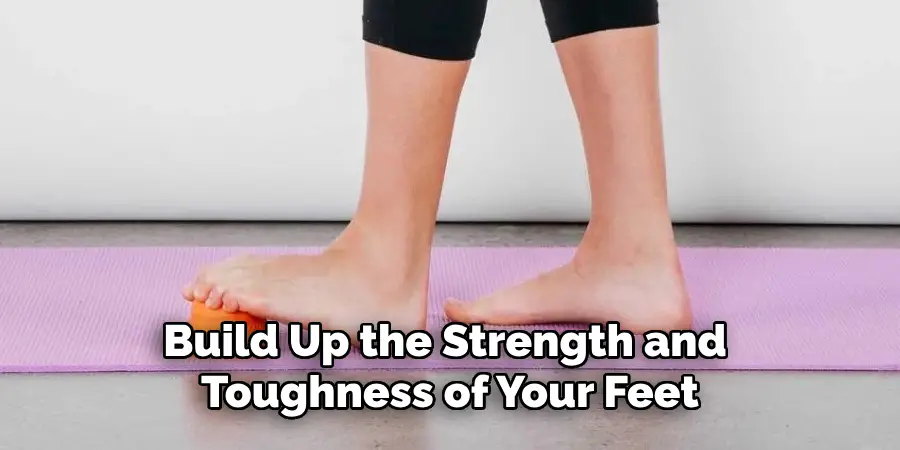
Is Toothpaste Good for Foot Blisters?
There is debate about whether toothpaste can effectively treat foot blisters. Some people claim that applying a small amount of toothpaste to the blister can help dry it out and speed up healing. However, no scientific evidence supports this claim, and some experts warn against using toothpaste on blisters as it may cause further irritation.
If you are dealing with a foot blister, it is best to stick to proven methods such as keeping the area clean and protected, using anti-blister balms or band-aids, and allowing the blister to heal naturally. It is always a good idea to consult with a medical professional if you have blister concerns.
How to Walk With Blisters?
Walking with blisters can be painful and uncomfortable, but there are some steps you can take to make it more bearable:
- Protect the Blisters: Before putting on your shoes, cover your blisters with moleskin, band-aids, or other protective measures.
- Wear Comfortable Shoes: Opt for shoes with ample cushioning and support, such as sneakers or flats. Avoid tight-fitting shoes that can aggravate the blisters.
- Take Breaks: If possible, take breaks from walking to rest your feet and allow the blisters to heal.
- Change Shoes Regularly: If you have multiple pairs of shoes with different styles or heel heights, consider rotating them throughout the day to give your feet a break from pressure and friction.
- Consider Using Walking Aids: If your blisters are excruciating, consider using walking aids such as crutches or a cane to take some weight off of your feet while they heal.
Remember to also keep the affected area clean and dry, and avoid popping or picking at the blisters as this can increase the risk of infection. See medical attention if your blisters do not improve or become increasingly painful.
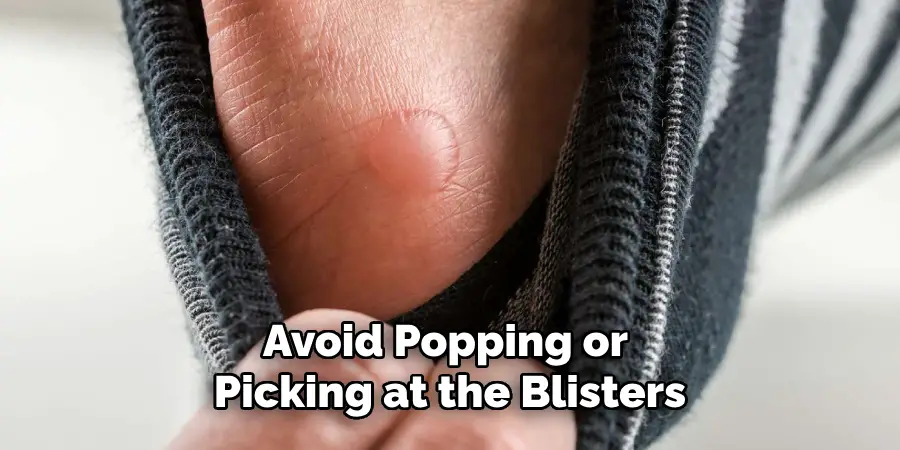
Conclusion
In conclusion, how to not get blisters from heels involves a combination of proper shoe selection, foot preparation, and gradual adaptation. Ensuring your heels fit well and match your foot shape is crucial to minimize pressure points and friction that can lead to blisters.
Additionally, taking steps to prep your feet, such as using anti-blister products and adhering to a break-in period for new shoes, can further protect against blisters. Rotating your heels and resting your feet by wearing different shoes can also help prevent blisters. Lastly, toughen your feet gradually through specific exercises and by responsibly increasing the duration and height of heel wear.
By following these guidelines, wearing high heels can be a more comfortable and enjoyable experience, free from the pain and inconvenience of blisters.

